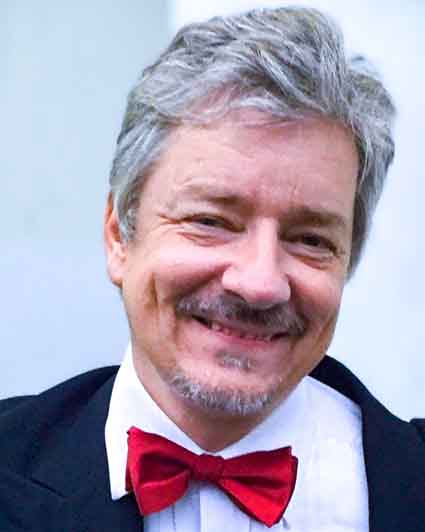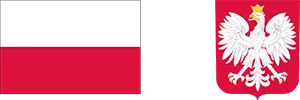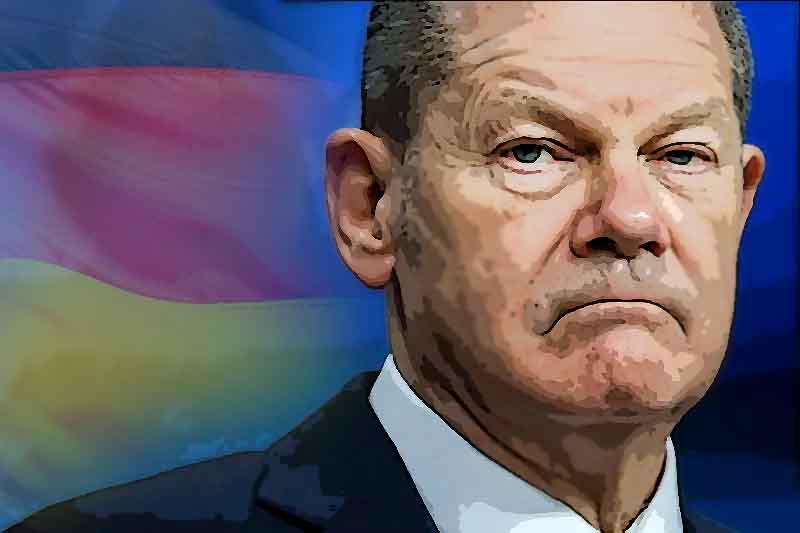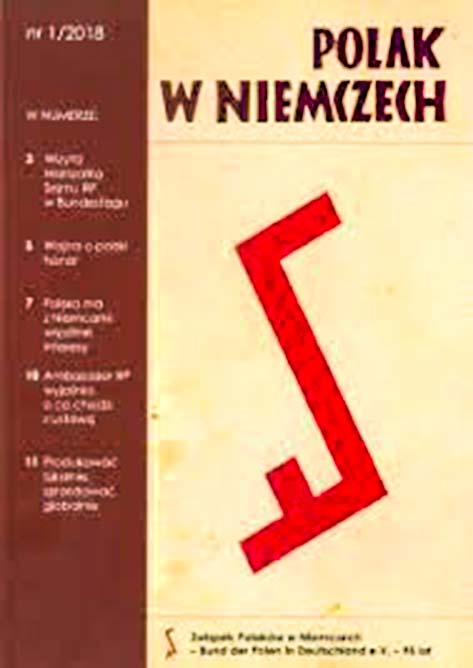On November 9, 1989, the world momentarily froze, though no one yet fully understood that they were witnessing the end of an era. Evening images from Berlin flashed across the globe: people standing on a concrete wall, music playing, champagne corks flying. It seemed as if history itself had opened a door. In reality, people had opened it—for years, patiently, often silently. Among them were many Poles.
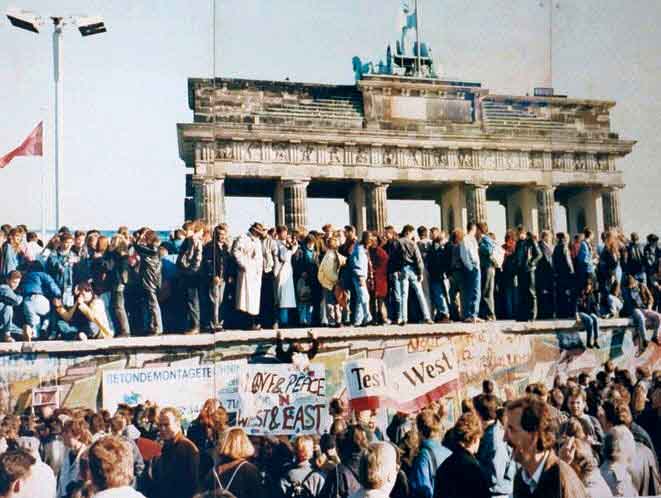
West and East Berliners at the Brandenburg Gate in 1989 (Source: Wikipedia)
Today, on another anniversary of the fall of the Berlin Wall, it's worth viewing this event not only as a symbol of the collapse of communism, but also as the fruit of the long, consistent work of freedom movements in Central and Eastern Europe, with Poland's Solidarity movement as the first crack in the iron monolith. Without the Polish August 1980, without the lessons of Polish resistance, without the—often misunderstood and today heavily criticized—Round Table compromise, and without the domino effect initiated in Gdańsk, Warsaw, and Wrocław, November 9th would have been different. Or perhaps it would not have happened at all.
How the wall that divided the world was built
After the Third Reich's surrender on May 8, 1945, the victorious powers divided Germany, and Berlin—despite being located in the Soviet zone—was cut into four sectors: the USA, Great Britain, France, and the USSR. The city became the scene of the first crises of the Cold War, such as the Berlin Blockade of 1948, which was resolved by the Western Airlift.
In 1949, two states were created: the capitalist FRG (Federal Republic of Germany) and the communist GDR (German Democratic Republic). Meanwhile, Berlin could not be politically "closed off." By 1961, some 3 million Germans—a demographic catastrophe for the GDR—had fled to the West.
The GDR authorities decided that the only way to detain citizens was a physical barrier.
August 13, 1961
In Berlin, first barbed wire appeared, then concrete. Within two days, the city was riven by a barrier that quickly became the most steadfast symbol of the world's division. The Wall wasn't just a wall—it was a system: watchtowers, barbed wire, searchlights, and orders to shoot anyone who tried to cross.
Shots were fired. It is estimated that 130–230 people, including some Poles, died while trying to escape.
Erected in 1961, the Berlin Wall was one of the most tangible symbols of the Cold War. It not only divided the city but also cut people off from their families, jobs, cultural heritage, and any sense of a normal world. However, the concrete, barbed wire, barriers, and guns were, above all, a frontier of fear: a reminder that the communist system could not hold its citizens together except through threat.
Life in the Shadow of the Wall
East Berlin existed in a shortage economy:
- months of waiting for clothes
- limited fruit seasons
- even decades for a car from the Trabant factory
- restrictions on education if someone had a "bad" political background
- a ban on broadcasting Western television
- surveillance by the Stasi (security sub-service), wiretapping and intercepting mail
The inhabitants of West Berlin lived differently—in prosperity, in a culture of free speech and freedom of travel. The Wall became a contrast between two worlds, two regimes, and two philosophies of life.
The eastern part of the wall was kept in impeccable condition; the western part took on a life of its own, covered with thousands of graffiti and colorful inscriptions.
Geopolitical Origins of the Wall
The construction of the wall was part of a larger Cold War puzzle. In 1955, the Warsaw Pact was formed, a military alliance of the USSR's satellite states: East Germany, Poland, Hungary, Bulgaria, Czechoslovakia, Albania, Yugoslavia (briefly), and, of course, the Soviet Union itself.
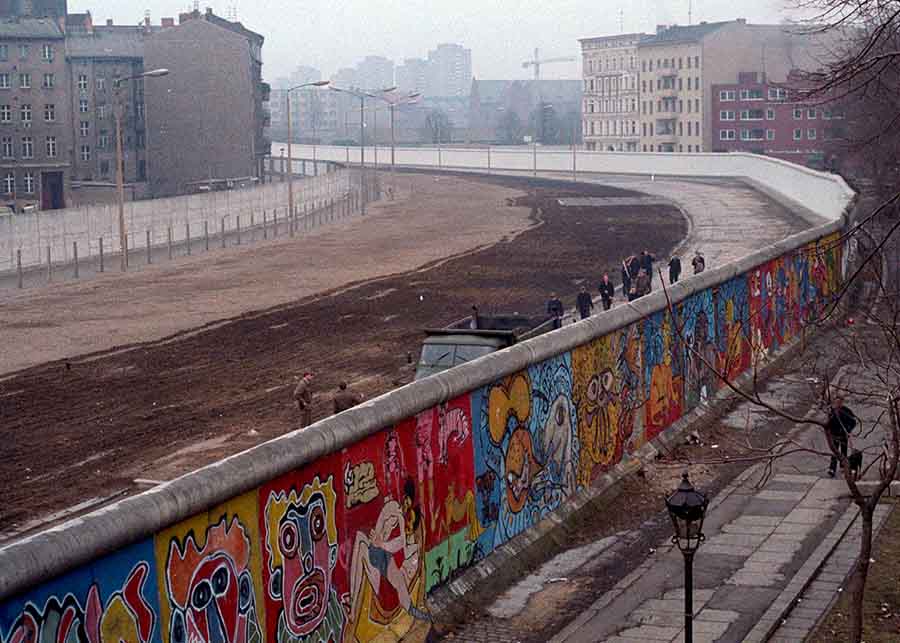
Berlin Wall (Source: Wikipedia)
Khrushchev's November 1958 ultimatum regarding Berlin only accelerated this process – the GDR authorities received the political green light to close the border once and for all.
And yet the wall fell – why then?
The popular version in Western textbooks is: "economic exhaustion, Gorbachev, Ostpolitik." Each of these elements was important, but none was sufficient. The fall of the GDR—the USSR's first and most important satellite vassal—was risky for Moscow. If the GDR fell, the entire bloc could crumble.
For Moscow, East Germany was a model "laboratory of socialism." The fall of the GDR signaled the beginning of the end for the entire bloc. That's why, when tens of thousands of people began fleeing through Hungary and Czechoslovakia in the summer of 1989, and the streets of Leipzig and Berlin began to fill with demonstrators, the Kremlin didn't respond with force. The world wondered why.
The answer leads to Poland.
Poland: How the End of an Empire Begins
When Solidarity was born in Poland in 1980, few could have predicted it would be the beginning of an avalanche. The movement born in the Gdańsk Shipyard, led by Lech Wałęsa, quickly became the largest peaceful, grassroots social movement in European history. Over 10 million people showed the world that the communist order could be challenged without weapons, without hatred, and without violence.
The government's decision to impose martial law in 1981 did not halt the awakening process. Quite the opposite. After years of struggle, sacrifice, repression, and underground activity, in 1989 Poland became the first country in the bloc to hold negotiated, partially free elections.
The result was a knockout blow for the communists: Solidarity candidates won 99 percent of the Senate seats and all available parliamentary seats. The elections of June 4, 1989, proved that the communist system was hollow inside—that it no longer had social legitimacy. This sent a message to all of Eastern Europe, and especially to the GDR: "If the Poles can do it, so can we."
It was a historic moment. For the first time, a Soviet satellite country demonstrated that democratic change was possible, yet bloodless. This event served as a wake-up call for the Germans: if Poles can do it, why not us? If Moscow wouldn't send tanks to Warsaw, perhaps it wouldn't send them to Leipzig either?
The historic Monday demonstrations in Leipzig—Montagsdemonstrationen—began in precisely this atmosphere. The German opposition followed the Polish events with attention and hope. Polish slogans were even cited, and many East German activists made no secret of their inspiration from the Solidarity movement.
Solidarity as a German mirror
When the East German public began to express mass opposition to the system in 1989, the Polish path became their instruction manual. Two factors particularly influenced the German opposition:
Effective Social Pressure Without Violence
Solidarity demonstrated that when millions of people speak with one voice, the regime loses confidence. A similar mechanism operated in the GDR, when first several hundred, then several thousand, and finally tens of thousands of people marched through the streets of Leipzig. The knowledge that Poles had been the first to dare was reassuring.Negotiations instead of revolution
The Polish Round Table and the peaceful transition of power proved to the GDR opposition that the system could be reformed, not just overthrown. As a result, the SED (Sozialistische Einheitspartei Deutschlands)—Germany's communist party—began to lose control faster than anyone had imagined.
Many German media outlets still emphasize that if it weren't for the Polish experience, if it weren't for the Poles' capacity for self-organization and dialogue, German reunification might have been completely different. It could have been delayed, bloody, or even impossible.
Poland's Open Door Policy in 1989
Poland's symbolic and practical influence on the fall of the Wall was also evident in our policy towards refugees from the GDR. In 1989, thousands of East Germans crossed the Polish border, heading for the German embassies in Warsaw or further west. Polish services did not block these movements, sending a clear signal: Poland no longer intended to act as the guardian of the Eastern Bloc.
For Moscow and the GDR, this was painful, but also clear, information – control over Central and Eastern Europe was beginning to crumble in the place that seemed to be the strongest link.
November 9, 1989: Chaos, Mistake, Pressure, and History
The evening opening of border crossings was the result of a mixture of:
- communication errors in the SED leadership,
- pressure from demonstrations,
- the feeling that the GDR was already being hollowed out from within.
When people began to press against the gates, the guards didn't shoot. They hadn't received an order. Because no one dared to issue one. The wall collapsed overnight. The process that led to this took decades.
What happened next
The opening of the border crossings on the evening of November 9th was the result of a combination of information chaos, the mistakes of party officials, and the pressure of street demonstrations. However, without the broad backdrop of changes in Eastern Europe, without the atmosphere of the communist system's disintegration, to which Poland contributed immensely, the GDR would not have found itself in this situation. After the fall of the Wall, processes began that transformed the continent:
- Germany was reunited in 1990
- Europe began to integrate anew
- Eastern Bloc countries regained independence or sovereignty
- Poland joined NATO and the EU a few years later
In a sense, each of these events was a further echo of the Polish August.
What does November 9 teach us?
For Poles, the anniversary of the fall of the Berlin Wall is not just a German anniversary. It's part of our own history of freedom. Sometimes we forget that in the 1980s, the entire world was watching us, and the Polish freedom movement was the most influential anti-communist movement in Europe. Today, as we look at global tensions, wars, disinformation, and the return of authoritarian tendencies in various parts of the world, it's worth remembering a few things:
1. Freedom begins with the courage of individuals
Solidarity was a mass movement, but it arose from a handful of courageous individuals who weren't afraid to say "enough." These people included workers, intellectuals, priests, and students. Similarly, in the GDR, demonstrations began with small groups and eventually grew into large marches.
2. Changes Take a Long Time
The Wall fell overnight, but the process that led to it took decades. It took Solidarity nine years to become a catalyst for change across the bloc. Today's world also requires patience—democracy isn't a given, and it must be nurtured.
3. The strength of free nations lies in solidarity
It's no coincidence that the word that changed Europe was solidarity. Joint action, mutual aid, and a sense of responsibility for others can push the boundaries of the impossible. The fall of the Berlin Wall was the best proof of this: Germans found hope because Poles had found it first.
Berlin today: a city of memory and the future
Much of the wall has disappeared, but fragments still exist—as a testament to the era and a warning. Today, Berlin is one of the most important centers of culture, art, and finance in Europe.
On the anniversary of its fall, the Berlin Wall takes on new meaning. Borders are re-emerging in Europe, sometimes symbolic, sometimes physical. We are divided by narratives, propaganda, cultural conflicts, information warfare, and external enemies. New walls are rising around us—often invisible, but just as real as the Berlin one.
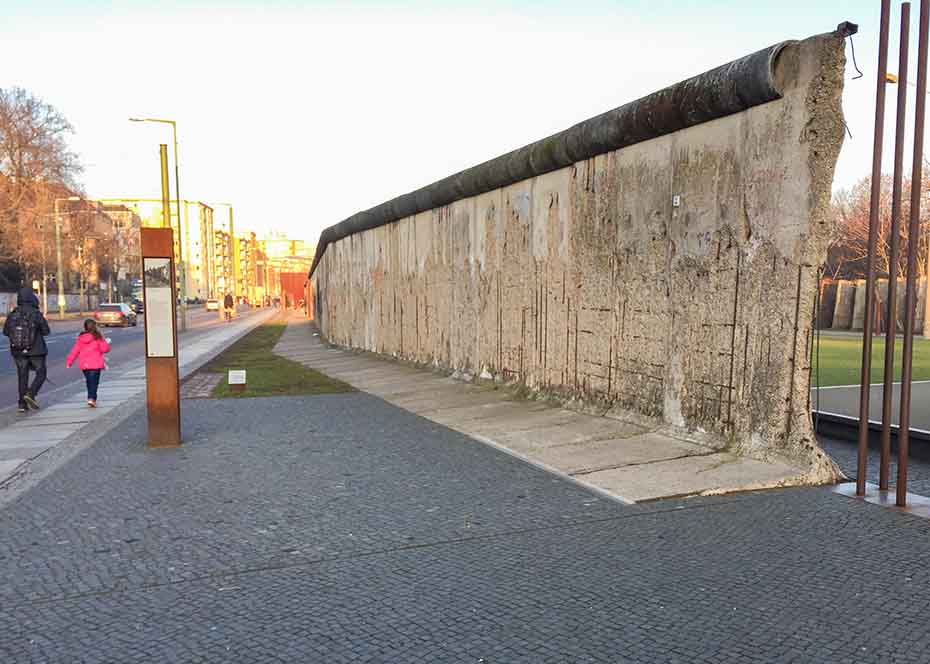
Preserved fragment of the wall at Bernauer St. (Source: Wikipedia)
That's why it's worth revisiting that November. Not for the nostalgia, but for a lesson. The Wall's fall was possible because people understood something simple: a wall is only strong when everyone fears it. When the fear ceases, all that remains is concrete, which can be broken down with a pickaxe, or even dismantled with one's own hands.
Polish narrative, European memory
Today, fragments of the former border are still visible in Berlin. Tourists take photos, children ask their parents why the wall once stood, and they don't quite understand why their parents keep talking about "those times."
It's important for us, as Poles, to remind the world that we are co-authors of this history. Not from the sidelines, not on the margins, but at the center. The Wall fell in Berlin in 1989, but it began to crack in Gdańsk in 1980.
This is our part of European heritage – a story of freedom that is not born of chance, but of the courage, work and solidarity of people who believed that a wall is only strong when everyone is afraid of it.



